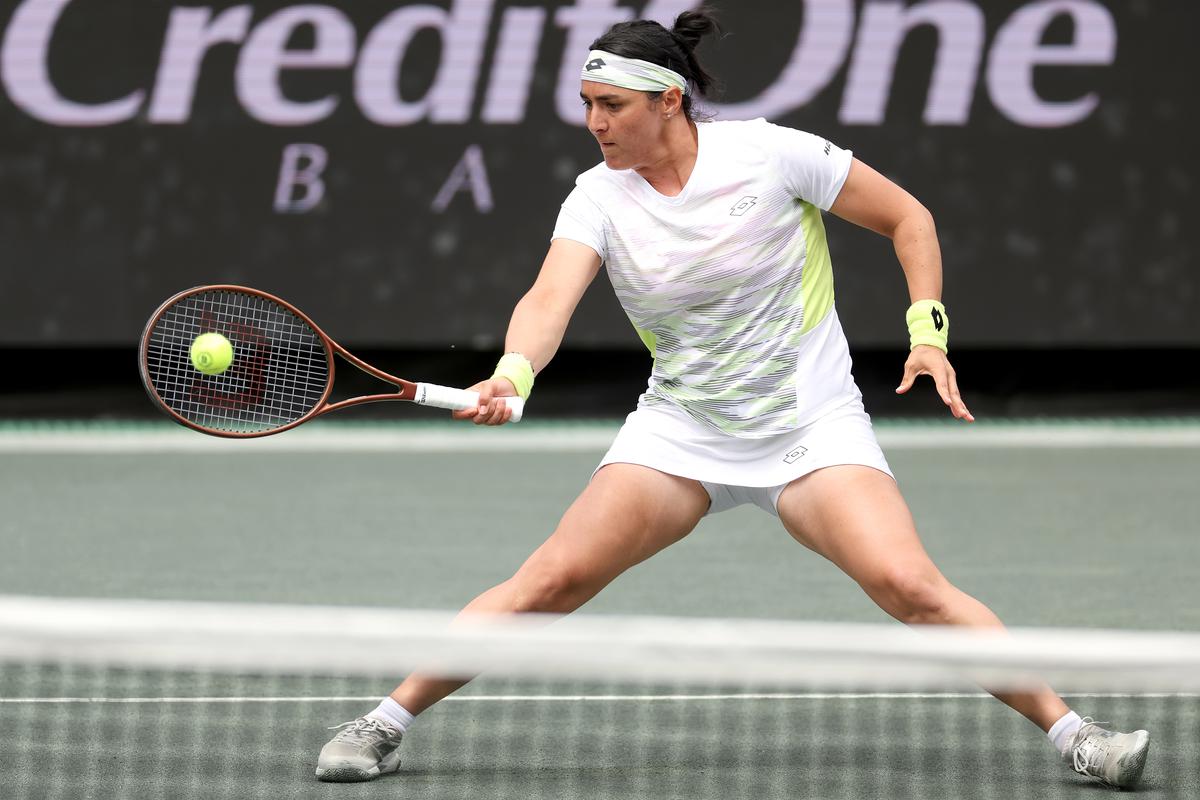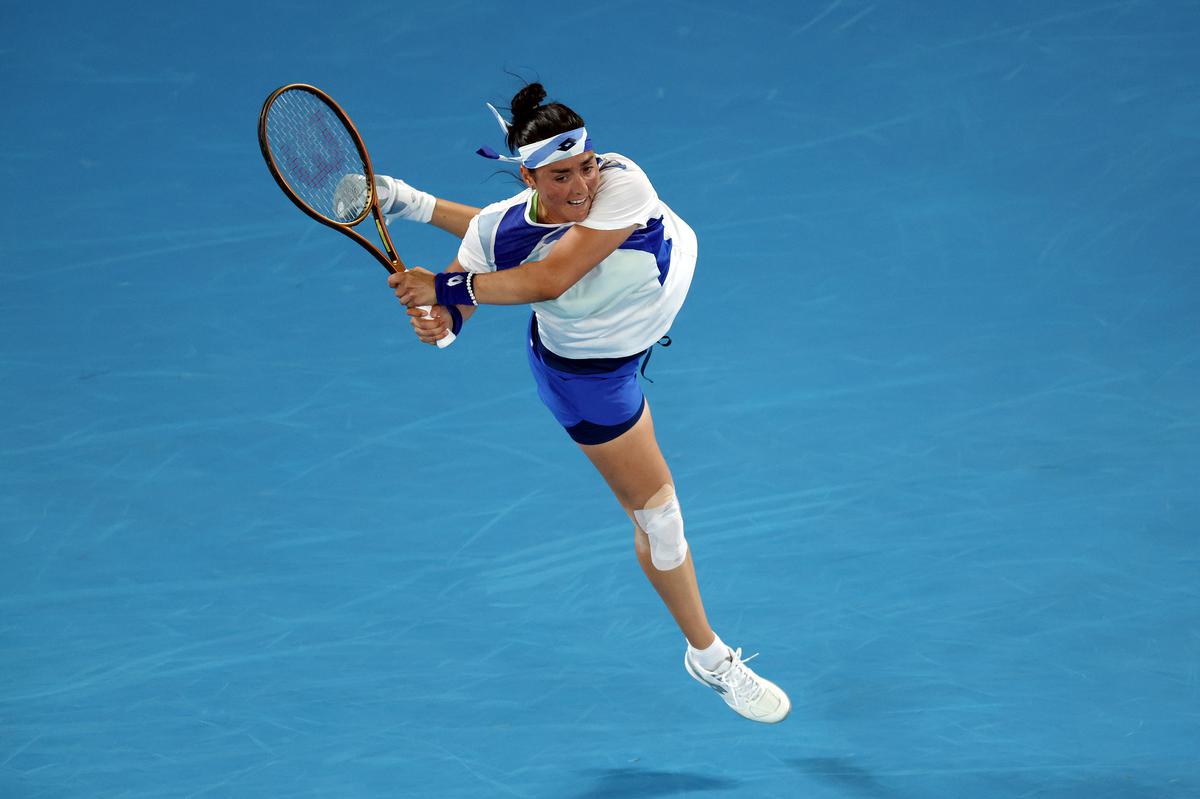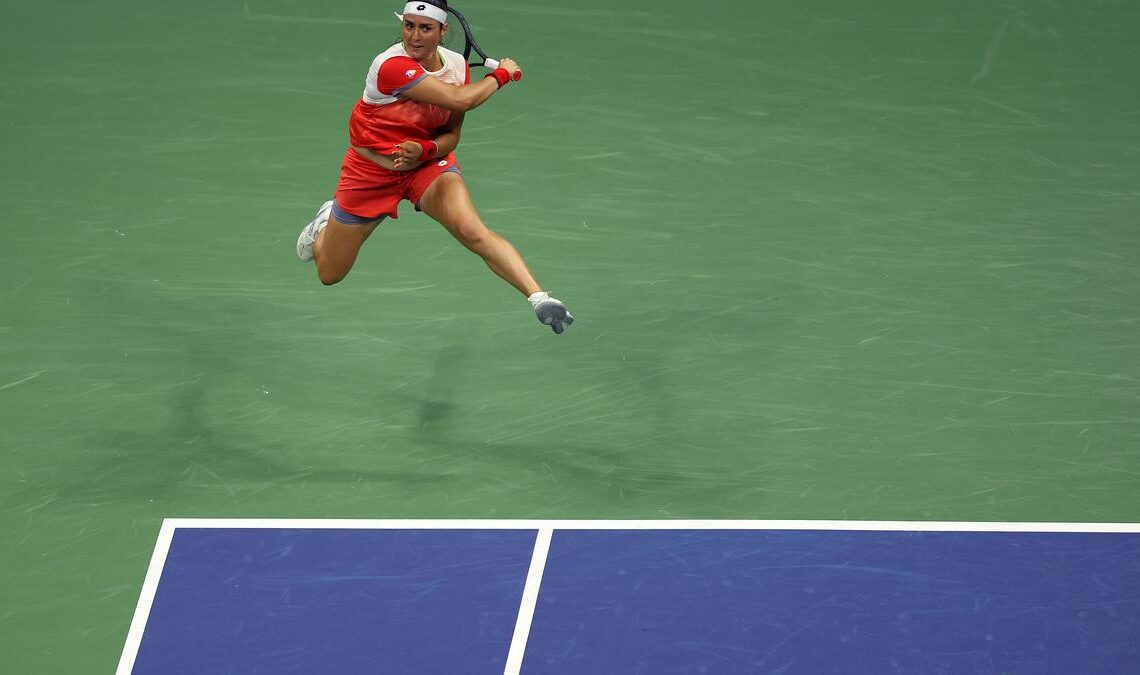
Moulding her game to clay: Jabeur’s drop shots and variations proved very effective on Charleston’s green-grey clay, helping secure her first title this year. She will hope they are just as successful on Roland-Garros’ red dirt when the clay-court Major begins next month. Photo credit: Getty Images

A woman for all surfaces: Jabeur’s quality on clay and her natural feel for grass are eye-catching, but the Tunisian is also a contender on synthetic courts. Photo credit: Getty Images
Tennis as a sport has long lent itself to artistic expression. In the decades gone by, many players have come to be seen as virtuosos, with parts of their games having acquired cult status.
Martina Navratilova’s athleticism, Steffi Graf’s grace, John McEnroe’s volleying, Justine Henin’s court-craft, Fabrice Santoro’s magic hands, Agnieszka Radwanska’s imagination and the whole of Roger Federer’s oeuvre… the list can go on.
In a heavily coached sport, where strokes and playing styles mostly follow pre-set templates and set-in-stone methods, these players have given the impression that tennis can sometimes be more art than science. Prototypes are still commonplace, but there is space for the iconoclasts and independent thinkers, too.
Ons Jabeur, a self-confessed romantic, is the latest entrant in this exotic list. Friendly, charming and always sporting a big smile, the 28-year-old Tunisian is among the most creative of today’s tennis players.
She is ranked No. 4 in the world and on Sunday triumphed at the Charleston Open (WTA 500) by beating Switzerland’s Belinda Bencic, earning her first title of the season, her second on clay and the fourth of her career. Having struggled with a knee injury since the Australian Open, it was Jabeur’s return to her competitive best.
Ingenious stroke-making
And if those gasps and yelps from many an onlooker, when Jabeur came up with breathtaking drop shots, ingenious slices and trick shots, including the front-facing tweener, are enough of a barometer, she might just be this era’s ticket to tennis as ‘religious experience’.
Jabeur’s stock has largely been built on her superlative performance in the 2022 season. She excelled on clay, making the final at Charleston, winning in Madrid (WTA 1000) and finishing runner-up in Rome (WTA 1000) to Iga Swiatek.
Though she crashed out in the first round at Roland-Garros, she quickly dusted it off to win on grass at Berlin and made a captivating run to the final at…
Click Here to Read the Full Original Article at | The Hindu…

